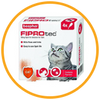The Ultimate Guide to Pet Therapy: How Animals Improve Mental Health and Well-being

Unlocking the Healing Power of Animals: A Comprehensive Guide to Pet Therapy and Its Impact on Mental Health
The Healing Power of Pet Therapy

Why Mental Health Matters: The Role of Pets in Our Lives

The Science Behind Pet Therapy
The Remarkable Human-Animal Bond

Physiological Benefits of Pet Therapy
- Stress Reduction
- Lower Blood Pressure
- Improved Cardiovascular Health
Psychological Benefits of Pet Therapy
- Reduced Anxiety and Depression
- Increased Social Interaction

- Enhanced Self-esteem
Types of Pet Therapy
A. Animal-Assisted Therapy (AAT)

B. Animal-Assisted Activities (AAA)
C. Equine-Assisted Therapy

D. Dolphin-Assisted Therapy

Popular Pet Therapy Animals
A. Dogs
B. Cats
C. Horses
D. Rabbits
E. Birds
F. Small Mammals (e.g., guinea pigs, hamsters)
G. Unconventional Therapy Animals (e.g., pigs, llamas)
Pet Therapy in Different Settings

A. Hospitals
B. Mental Health Facilities
C. Schools and Universities
D. Nursing Homes and Assisted Living Facilities
E. Rehabilitation Centers
F. Prisons
How to Get Involved in Pet Therapy
A. Assess Your Pet's Suitability
B. Training and Certification
C. Research and Connect with Local Organizations
D. Join a Pet Therapy Network
E. Become an Advocate and Educate Others
F. Continuously Improve and Adapt
Success Stories and Case Studies
Conclusion
Additional Resources
Websites and Organizations
- Pet Partners (https://www.petpartners.org/) - A leading organization dedicated to improving human health and well-being through the human-animal bond. Pet Partners offers training, certification, and resources for therapy animal teams.
- Therapy Dogs International (https://www.tdi-dog.org/) - A volunteer organization certifies and registers therapy dogs and their handlers, facilitating visits to hospitals, nursing homes, and other facilities.
- The American Kennel Club Therapy Dog Program (https://www.akc.org/sports/title-recognition-program/therapy-dog-program/) - The AKC's program recognizes therapy dogs and their handlers, providing resources, support, and certification opportunities.
- Animal-Assisted Intervention International (https://aai-int.org/) - A global organization promoting the safe and effective use of animals in therapeutic and educational settings, offering resources, research, and professional development opportunities.
Books and Publications
- "Animals and the Human-Animal Bond: A Guide to the Empirical Research" by Aubrey H. Fine - A comprehensive overview of the latest research on the human-animal bond and its implications for mental health and well-being.
- "Handbook on Animal-Assisted Therapy: Foundations and Guidelines for Animal-Assisted Interventions" edited by Aubrey H. Fine - This handbook offers practical guidance and best practices for implementing animal-assisted interventions, featuring contributions from leading experts in the field.
- "The Healing Power of Pets: Harnessing the Ability of Dogs and Other Animals to Help Us Thrive" by Dr Marty Becker - A heartwarming exploration of how pets improve our lives, featuring inspiring stories and the latest research on the power of the human-animal bond.
Online Courses and Workshops
- Animal-Assisted Therapy Certificate Program (https://www.animalsandsociety.org/human-animal-studies/animal-assisted-therapy/) - Offered by the Animals & Society Institute, this program provides comprehensive training in animal-assisted therapy, covering the theoretical foundations, practical skills, and ethical considerations involved.
- Pet Partners Handler Training (https://www.petpartners.org/volunteer/become-a-handler/) - An online course that prepares individuals and their pets to become effective therapy animal teams, focusing on topics such as communication, animal behaviour, and safety.
- Animal Behavior Institute's Animal-Assisted Therapy Program (https://www.animaledu.com/programs-courses/animal-assisted-therapy) - This program offers training in the principles and practice of animal-assisted therapy, equipping students with the skills and knowledge needed to implement effective interventions.




























































































































































































 Support
Support
 Account
Account Facebook
Facebook

